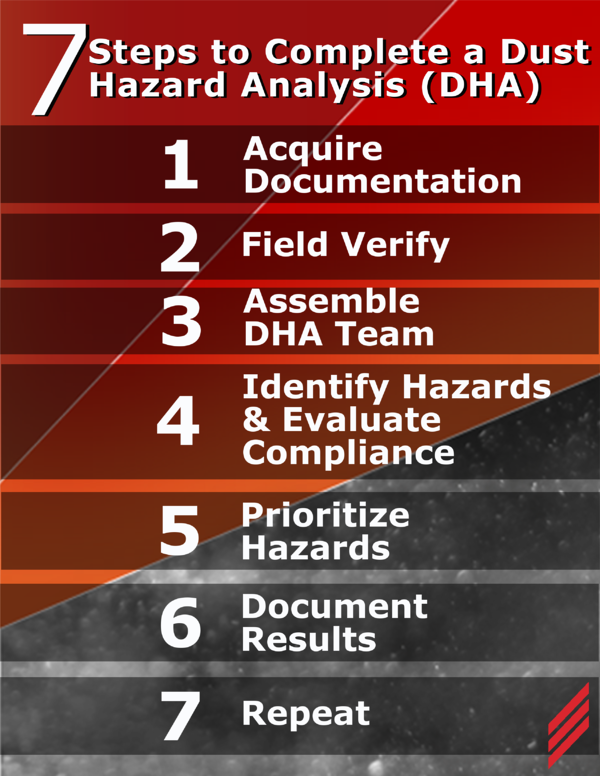
take the steps to
prevent a devastating explosion
take the steps to
prevent a devastating explosion
WHAT IS A DUST HAZARD ANALYSIS?
A Dust Hazard Analysis (DHA) is a required assessment by NFPA 652 Standard on the Fundamentals of Combustible Dust and its related NFPA 654 Standard for the Prevention of Fire and Explosions from the Manufacturing, Processing, and Handling of Combustible Particulate Solids. ATEX directives 99/92/EC and Directive 94/9/EC also require dust hazards to be evaluated at facilities throughout Europe.
A DHA typically includes:
- Dust testing to determine the relative hazards of dusts that are present
- A systematic review to identify and evaluate the potential fire, flash fire, and explosion hazards associated with the presence of one or more combustible
- particulate solids in a process or facility
- Identifying the hazard for each process, facility, and components, as well as pinpointing safe operating ranges and proper safeguards
- Data collection for system and performance requirements including dust hazard testing
- Providing advice for combustible particulate solids management and documentation of all results in the DHA
WHY PERFORM A DUST HAZARD ANALYSIS?
Fire and explosion risks are present in most industries that manufacture, generate or handle combustible particulate solids and there are many materials that can be explosive in dust form. Where these hazards are present, a DHA is required to identify, assess and mitigate the dangers of fires, deflagration, and explosions from combustible particulate solids.

